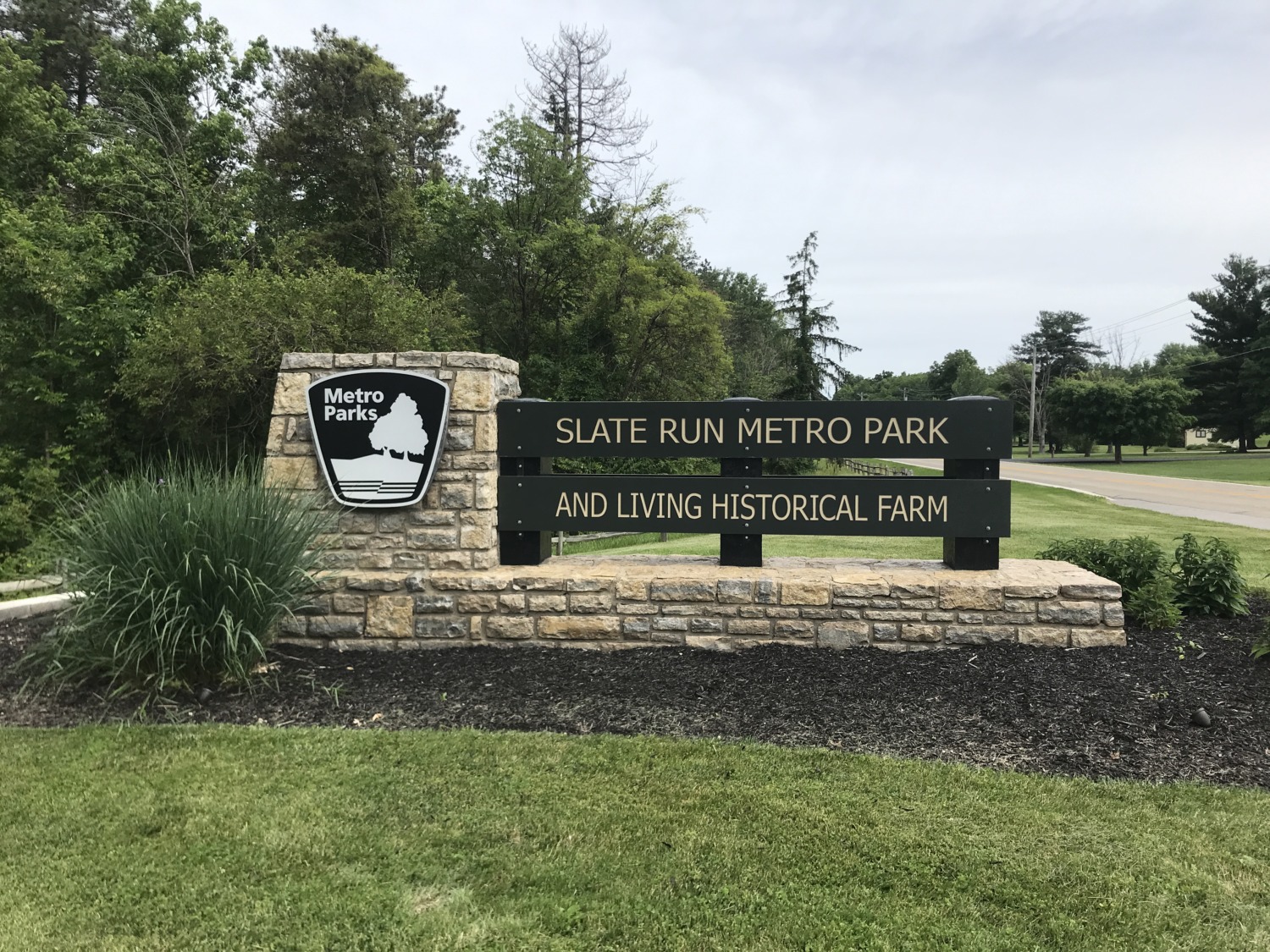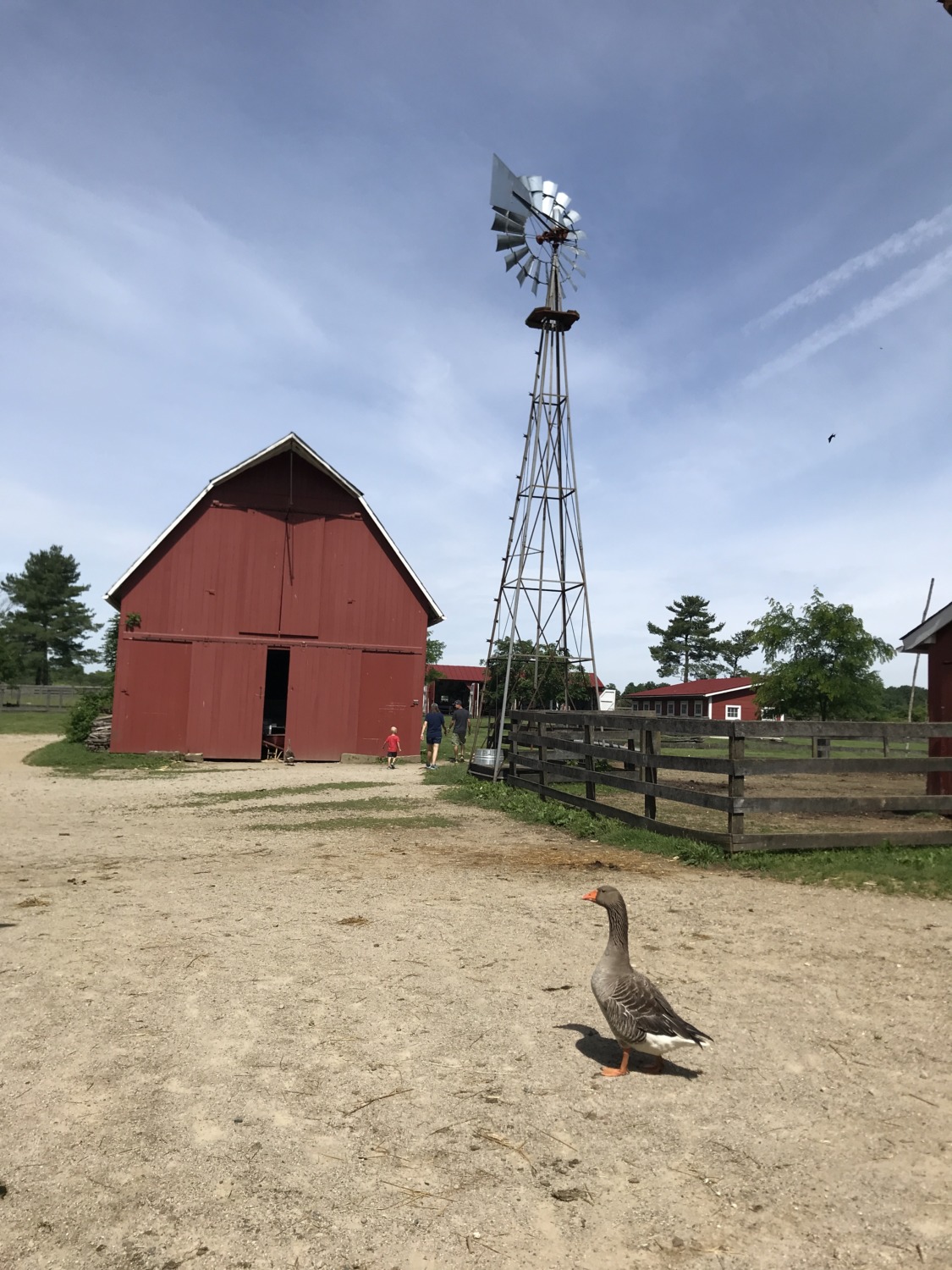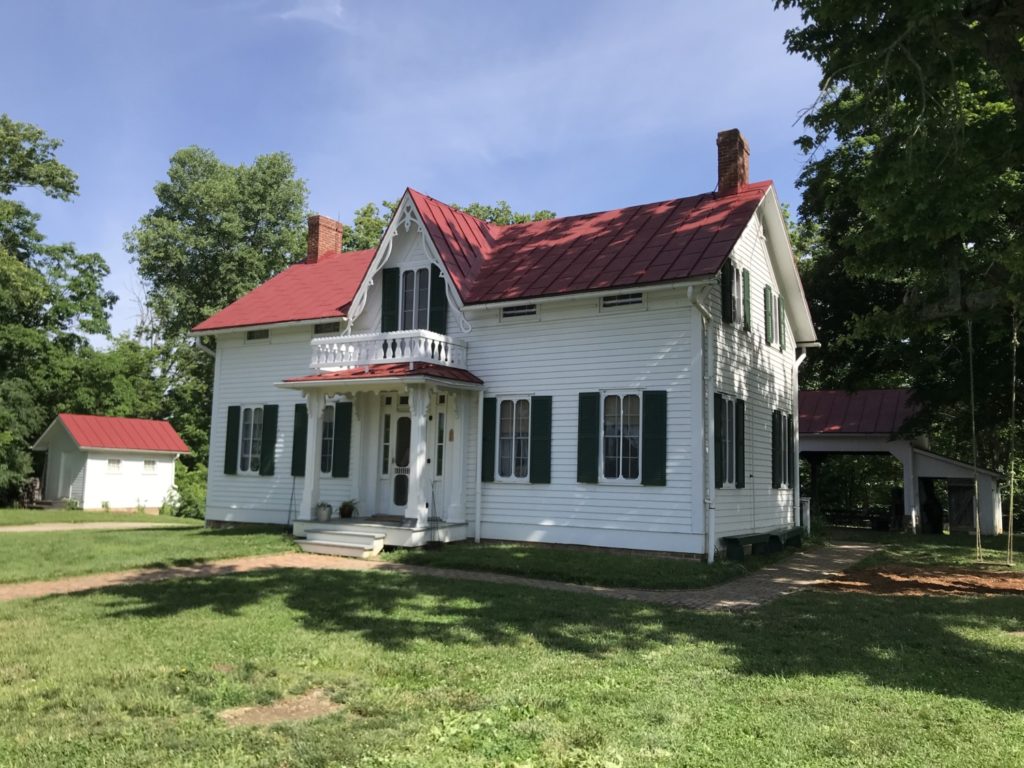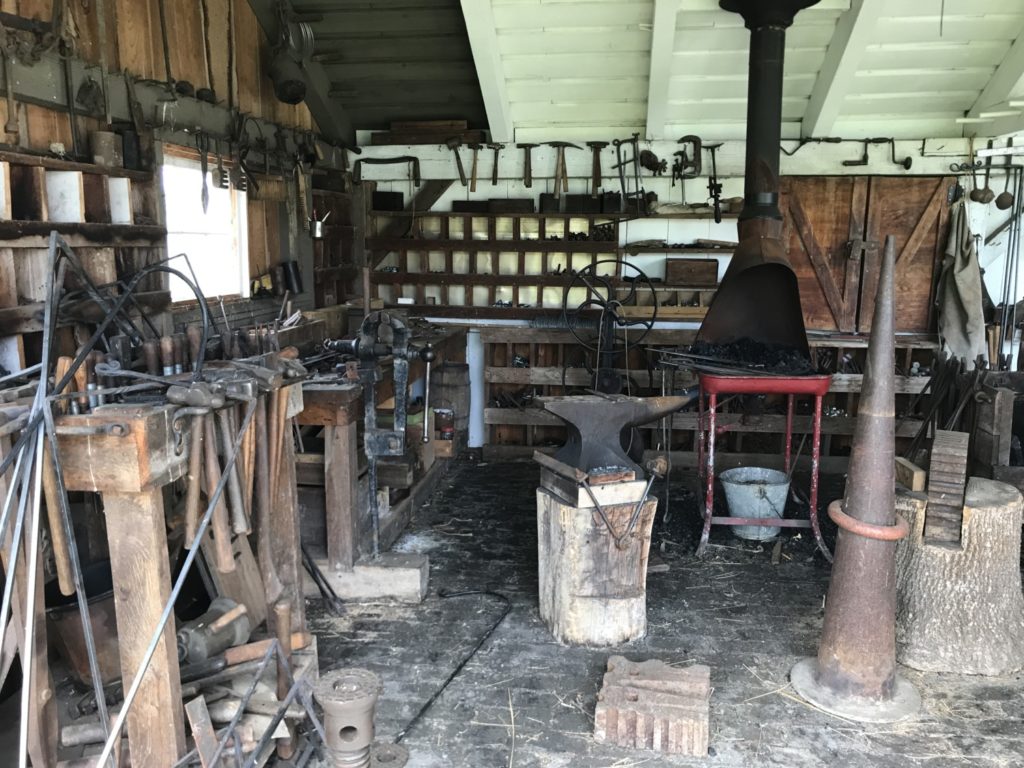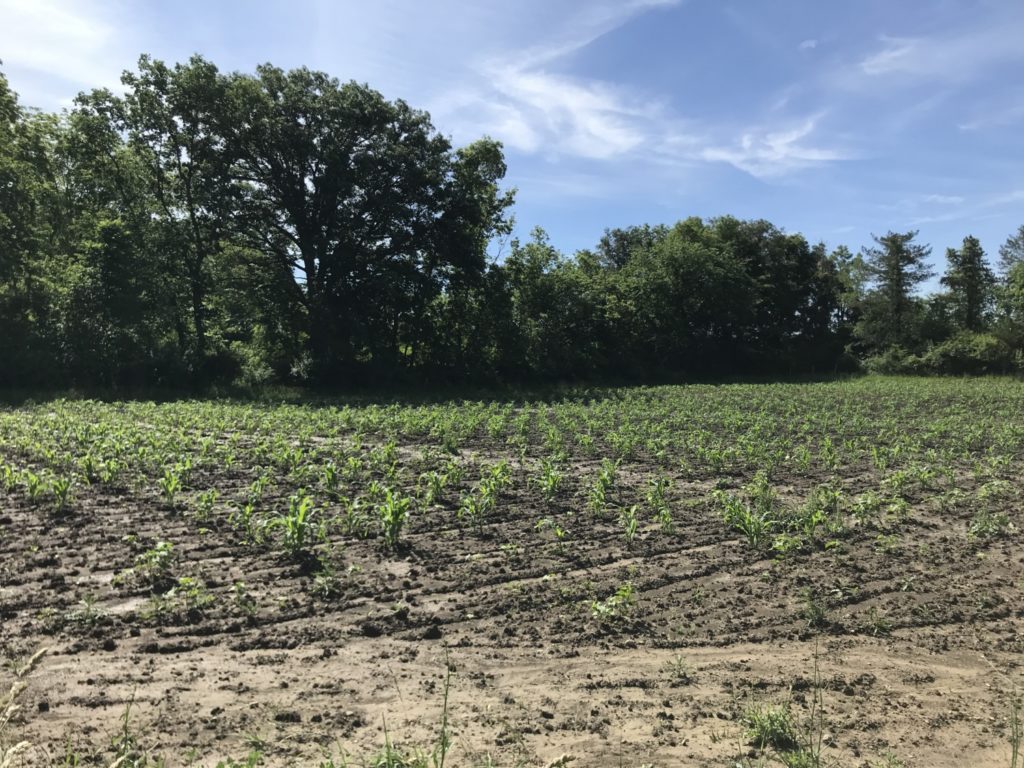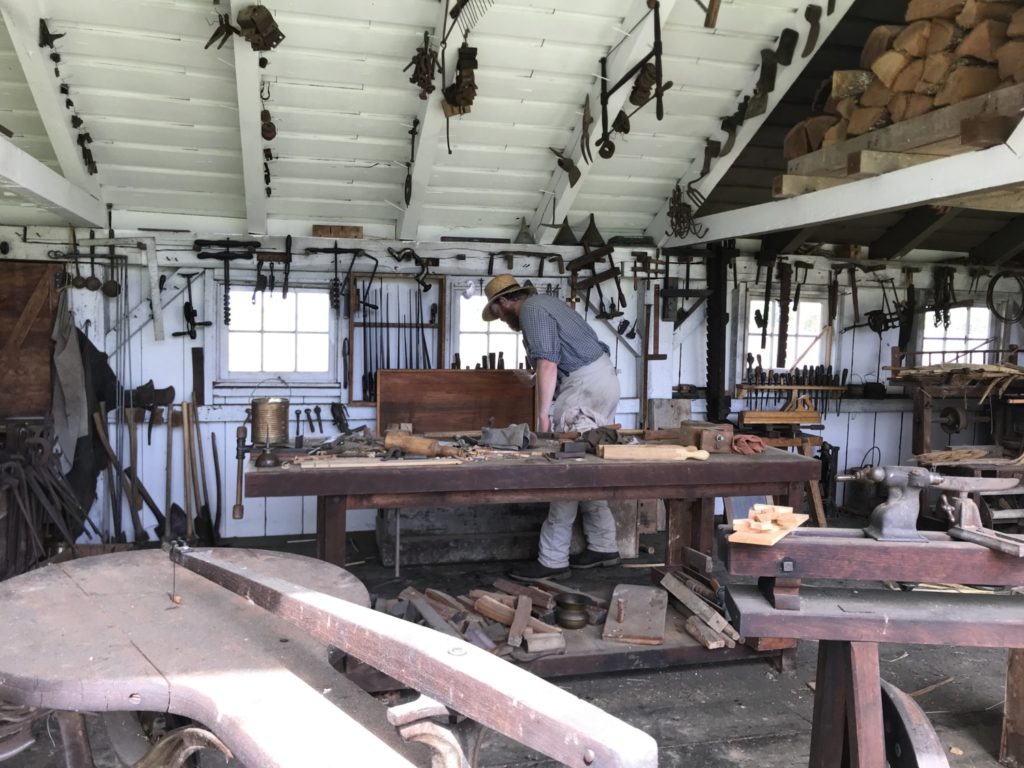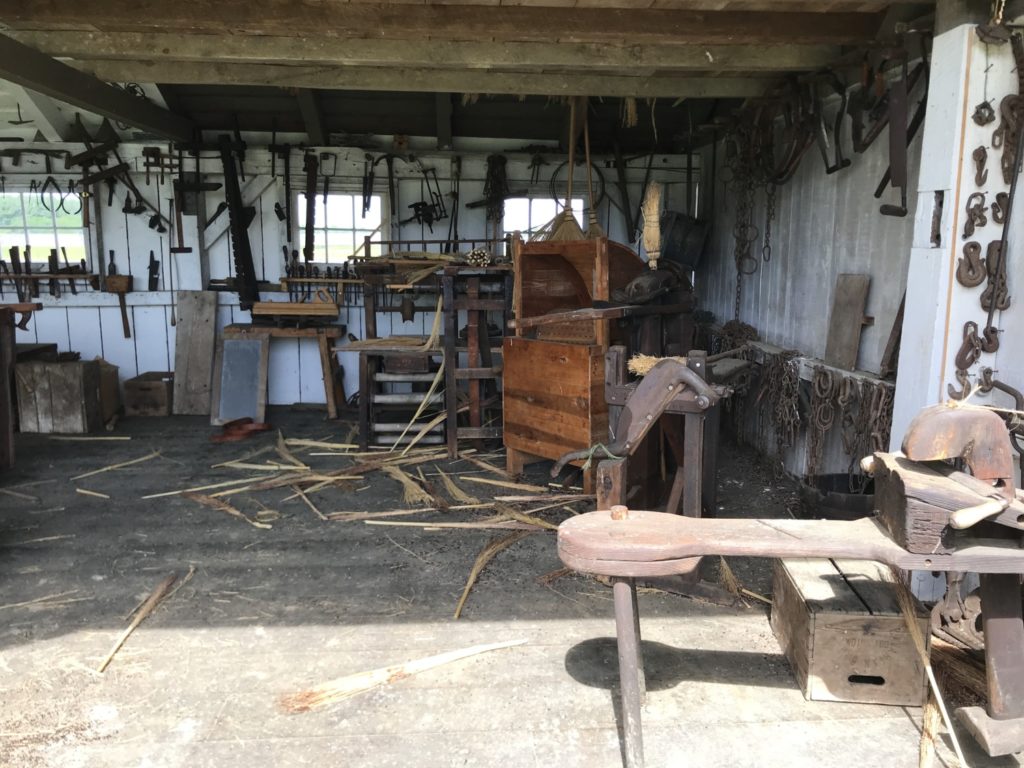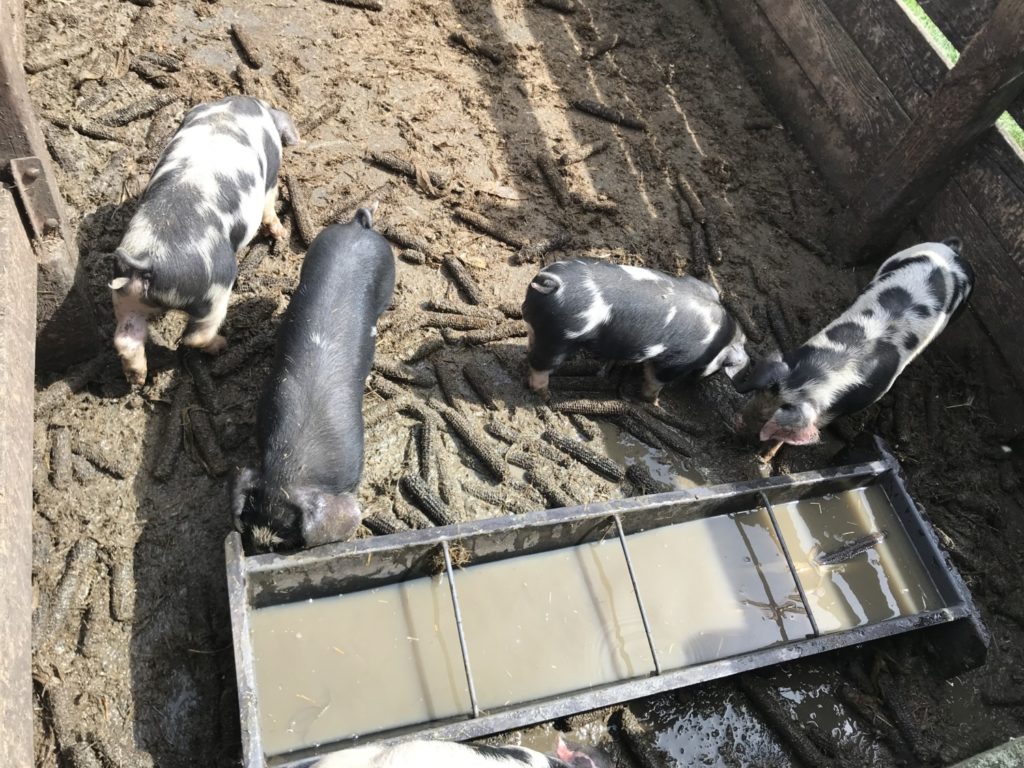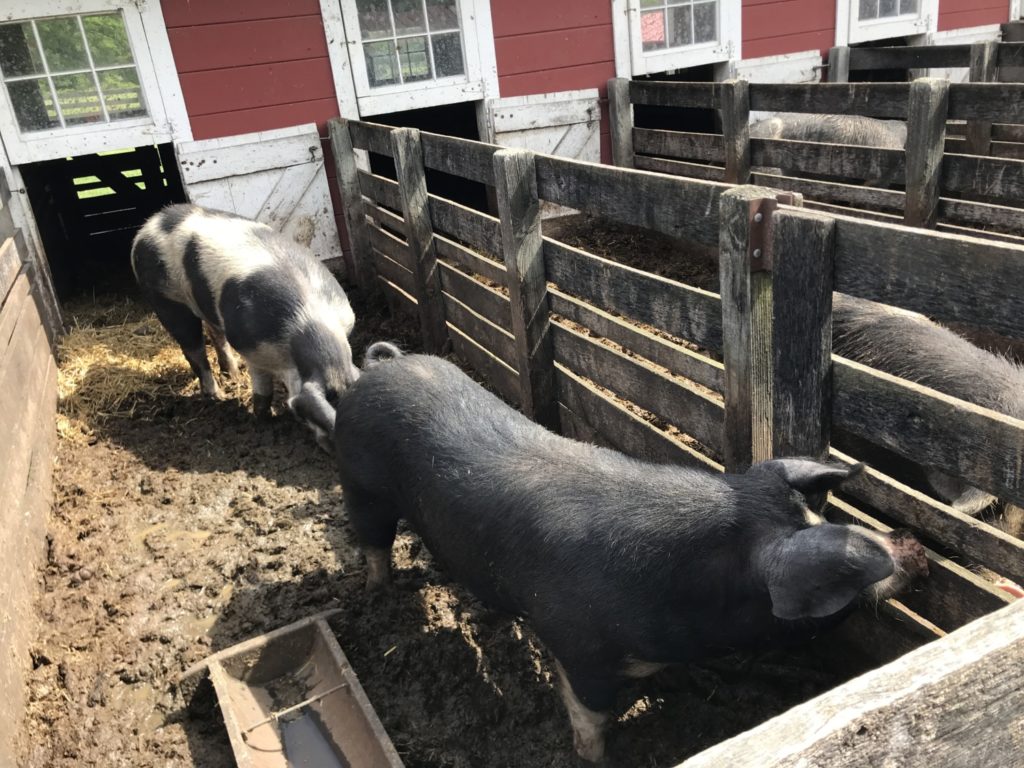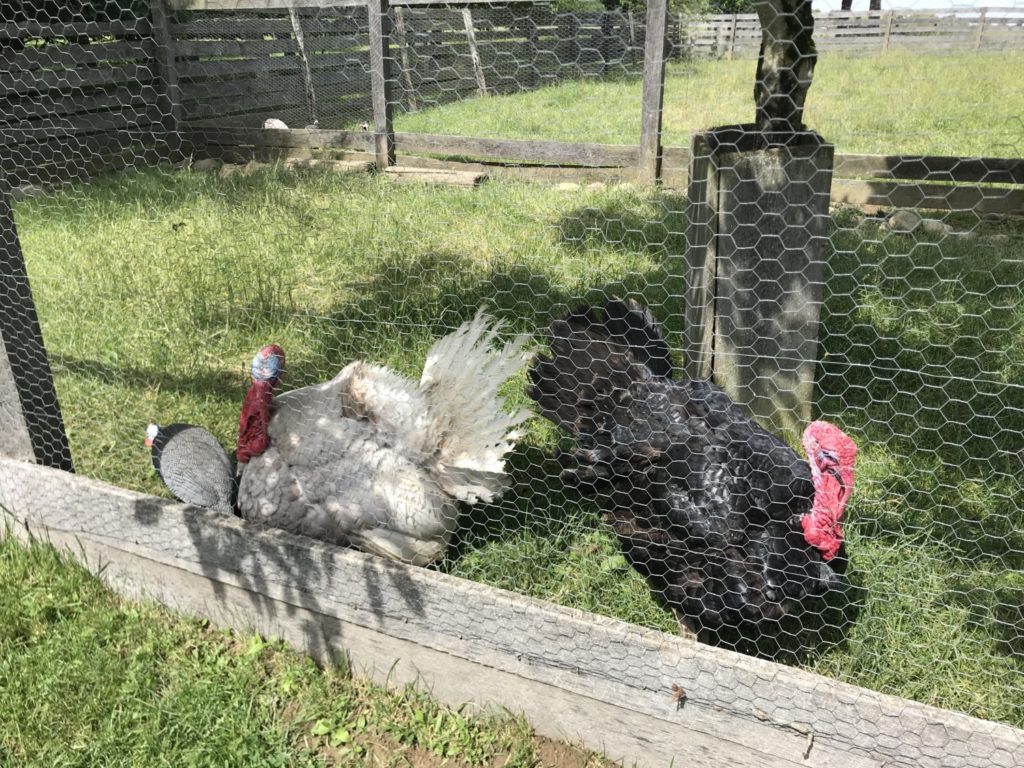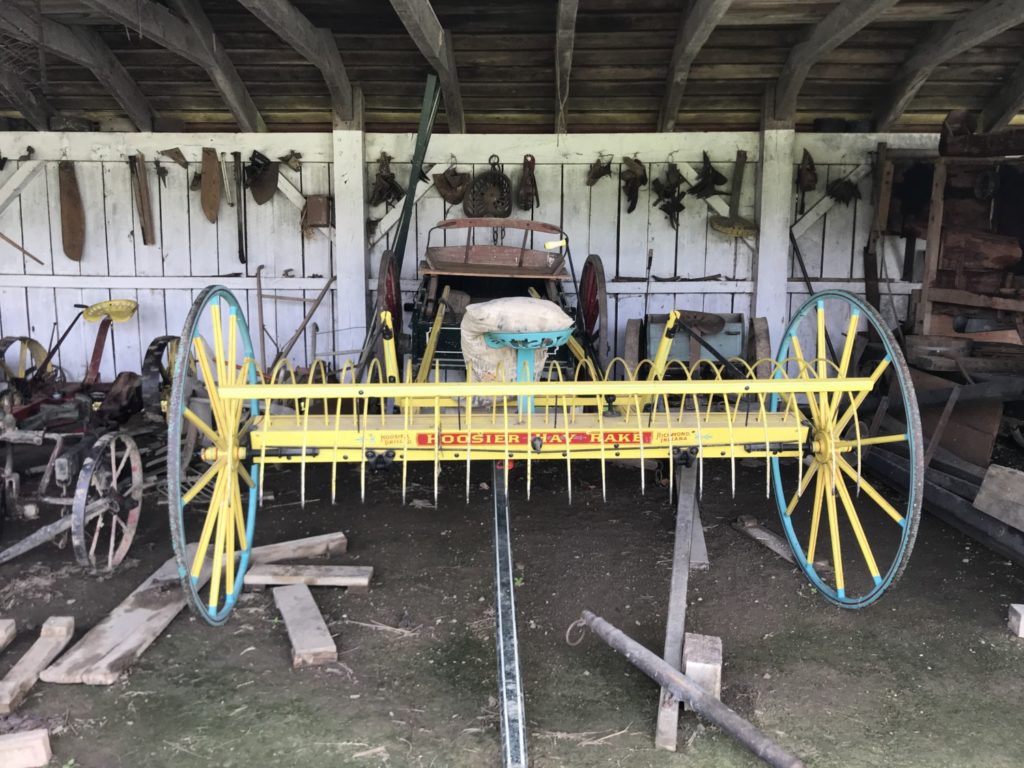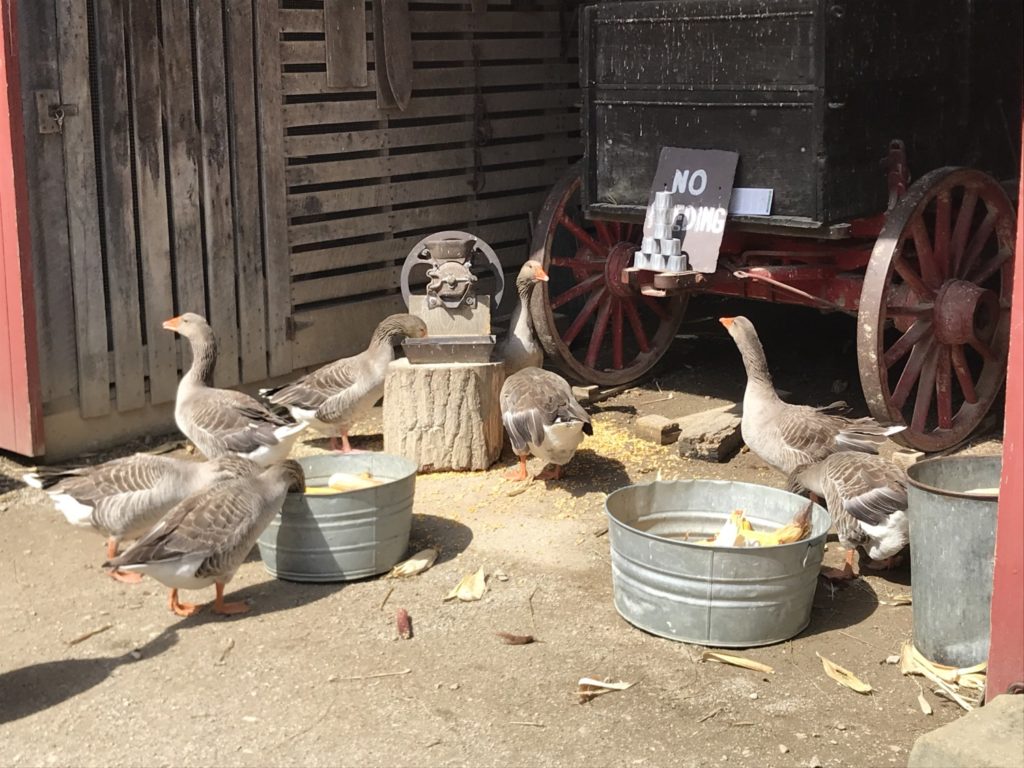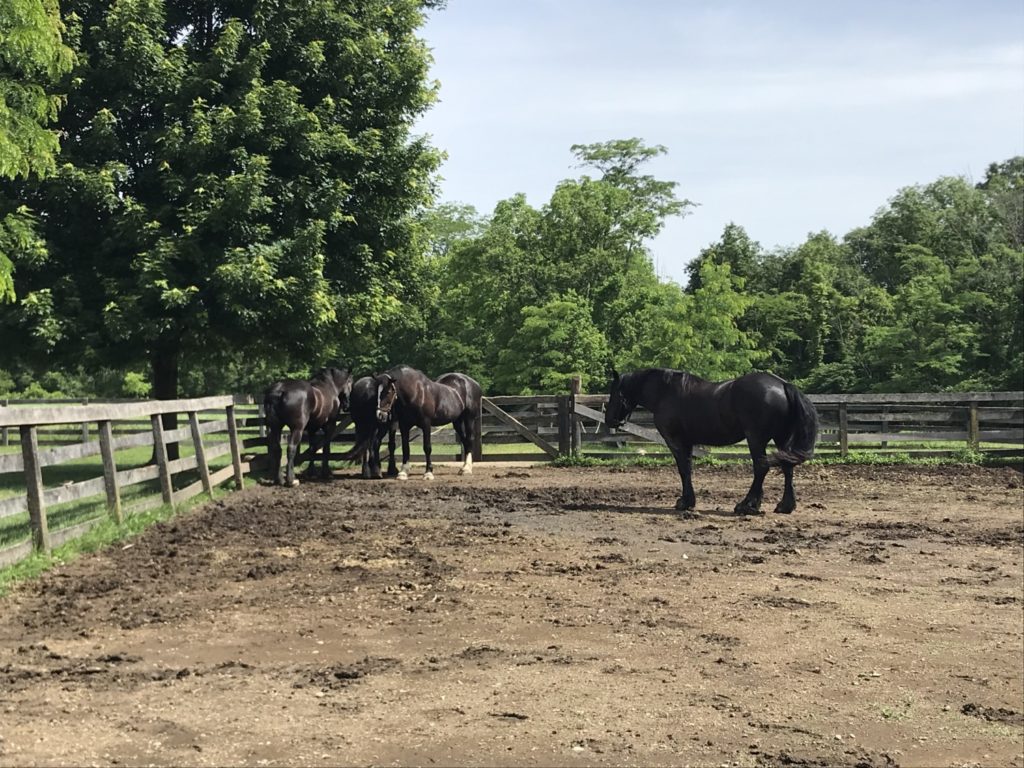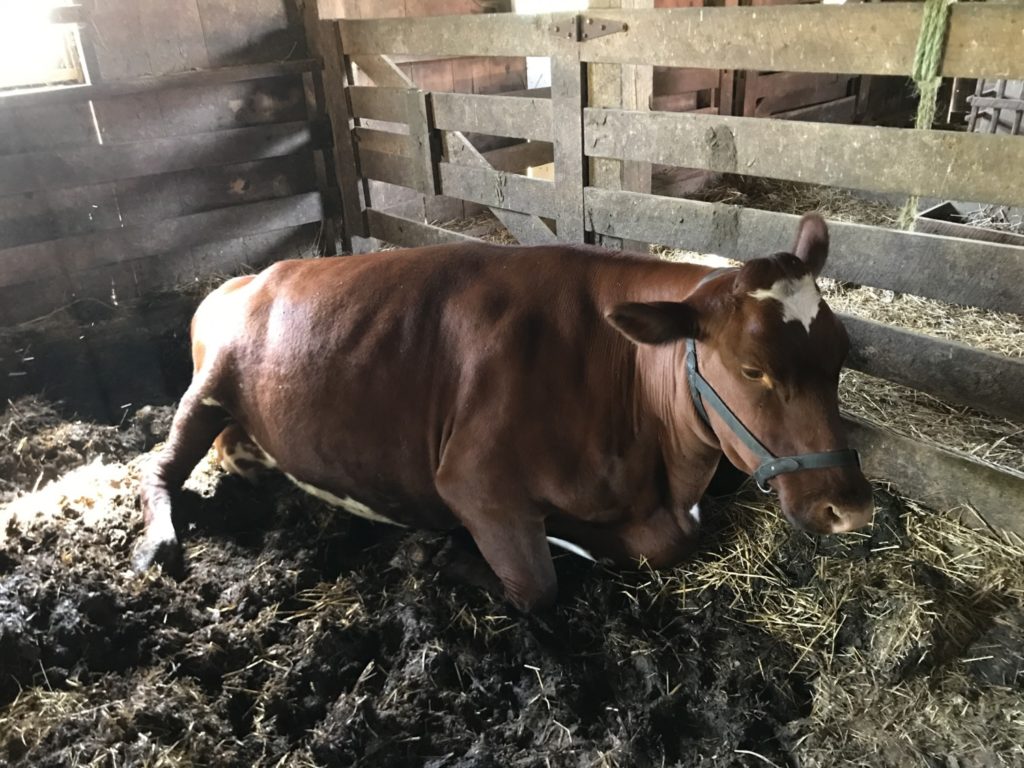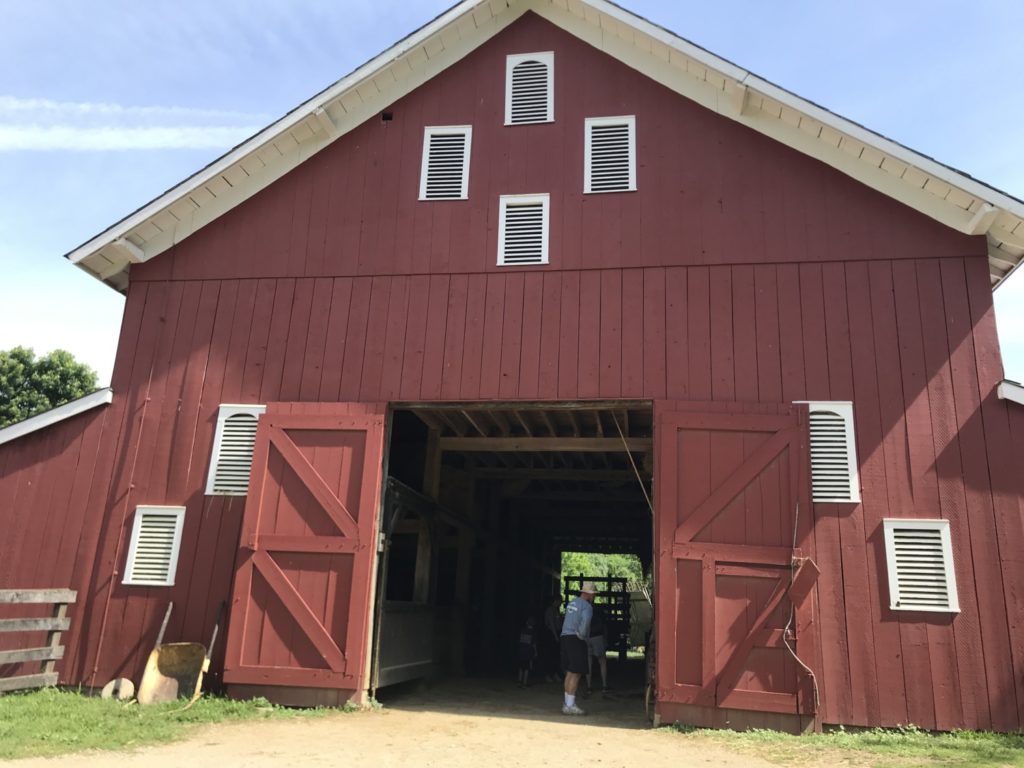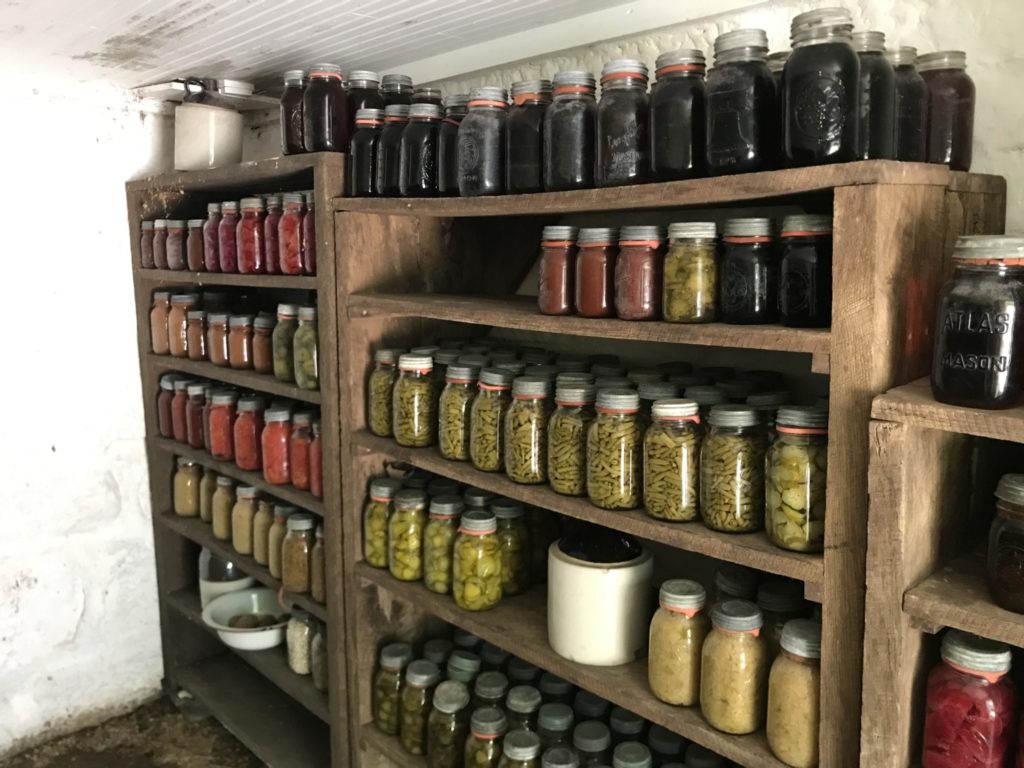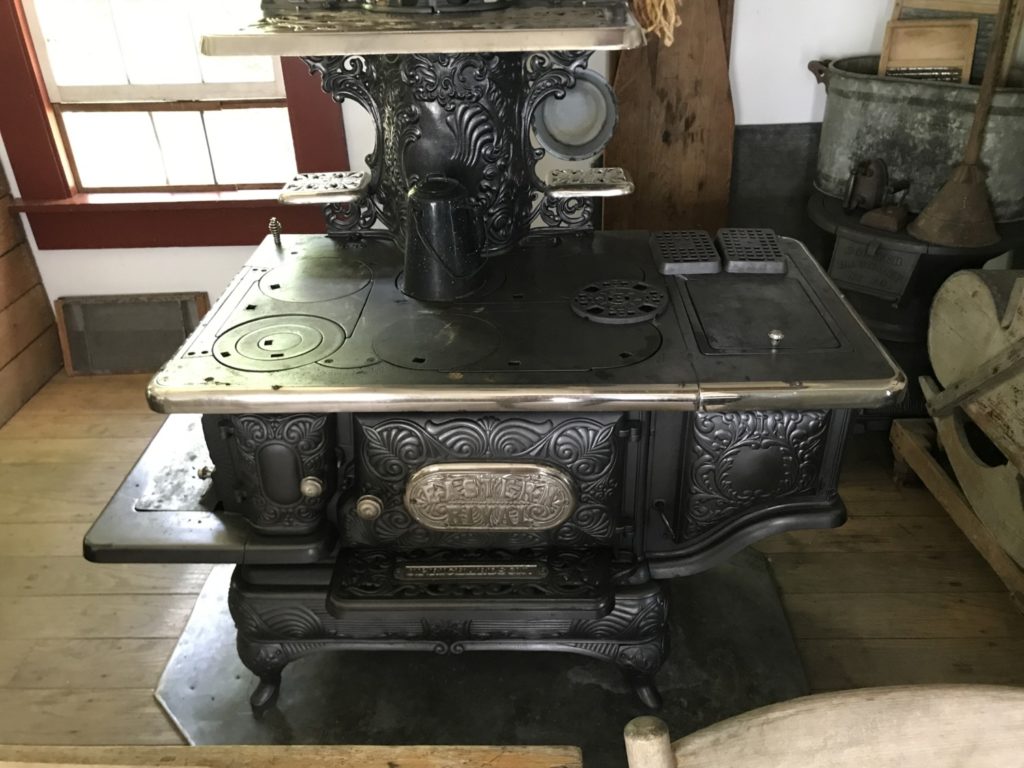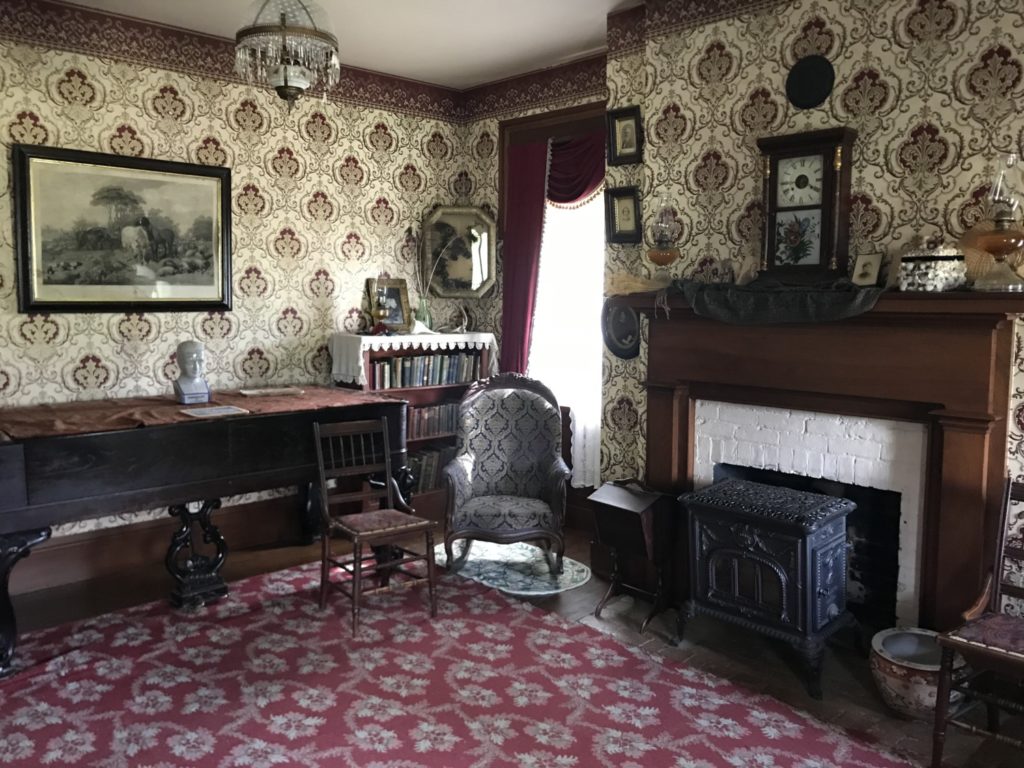A couple of weeks ago Tom and I visited Slate Run Living Historical Farm Metro Park. Because we are in Ohio for a longer period of time this summer, we have been looking into some volunteer possibilities. We have heard good things about Slate Run and wanted to check it out.
Slate Run Living Historical Farm is located in the Slate Run Metro Park. The metro park is almost 2,000 acres, located southeast of Columbus and south of Canal Winchester. It is about 30 miles from our home in Westerville. The park has over 10 miles of hiking trails. There are picnic shelters, natural play areas, a new playground, and fishing. The topology ranges from hardwood forest to wetlands, grasslands, and meadows.
Slate Run Living Historical Farm is situated in the south central part of the park. The land here has been actively farmed since the early 1800’s. The current farmhouse was built in 1856 and the barn was built in 1881. When the Metro Parks bought the land, they decided to restore the buildings so that the farm would appear as it had at the time the barn was built. By developing a living historical farm, the Metro Parks is preserving and interpreting the agricultural history of the area.
Today the farm is run as a family farm would have been in the 1880’s. The people who work and volunteer at Slate Run Living Historical Farm care for the animals on the farm, plant crops and harvest them. The farm programs illustrate how most of the land around Columbus was once used. Kids who are used to seeing housing developments can see the routines of farm life and how they were carried out in the days before electricity or gasoline engines.
Tom and I had a wonderful time walking around the Slate Run Living Historical Farm. As we walked down the lane into the farm, we saw a pasture with sheep. One of the newer lambs was looking at a group of preschoolers peering through the fence. The lamb “baaa”ed at the kids and the kids all “baaa”ed back. Each time the little lamb said “baaa” and received a “baaa” back, he would step a little closer to the fence. Eventually he came up to the fence and all the preschoolers crowded around to pet him and continue talking to him. It was adorable.

We saw a flock of geese, some turkeys and chickens, and some ducks, just as you would on a family farm in 1880. There were two cows in the barn and some Poland China hogs, which were first bred in Warren County, Ohio in the early 1800’s. Poland China are the largest breed of pig, and these were very big. Their pens were muddy and stinky. Living history smell as well as sight.
The farm uses Percheron horses to pull the plows and wagons. Percheron are the smallest of the draft horses and are very muscular and strong. Cattle, hogs, and poultry are raised on the farm for milk products, meat, and eggs. Surplus animals are sold for cash, just as they would have been in the 1880’s.
We talked to Farmer Harmon for quite a while. He showed us the blacksmith shop and the woodworking shed. We also saw the woodstove in the summer kitchen and the treadle sewing machine where they make the clothes that the living history workers wear. People who work and volunteer at the farm take care of the animals and attend to seasonal chores. Farmer Harmon had just separated the piglets from their mother in order to wean them. He said that was a dirty job that took a lot longer than he planned. He also told us that the Percheron horses were the smallest ones they could find because draft horses were much smaller and more muscular back in the day.
The farm has a large kitchen garden full of vegetables and herbs. We saw a root cellar full of vegetables that were canned on the farm last fall. The more we saw the more we liked the farm and we could see ourselves volunteering there. We haven’t worked in the 1880’s yet, so it would be a new time in history for us to learn. I also had ancestors who farmed just down the road from the Slate Run farm, so it would be like stepping into their shoes. We were impressed by the number of people visiting the farm. On that Friday morning there were several groups of school-aged kids, two busses of preschoolers, and about a hundred people who had brought their families for the morning.
After enjoying the farm, we called the volunteer coordinator for the park and filled out volunteer applications. We are waiting for our background checks to be done and then, hopefully, we will be able to volunteer one day a week or a couple of days a month at the Slate Run Living Historical Farm.

